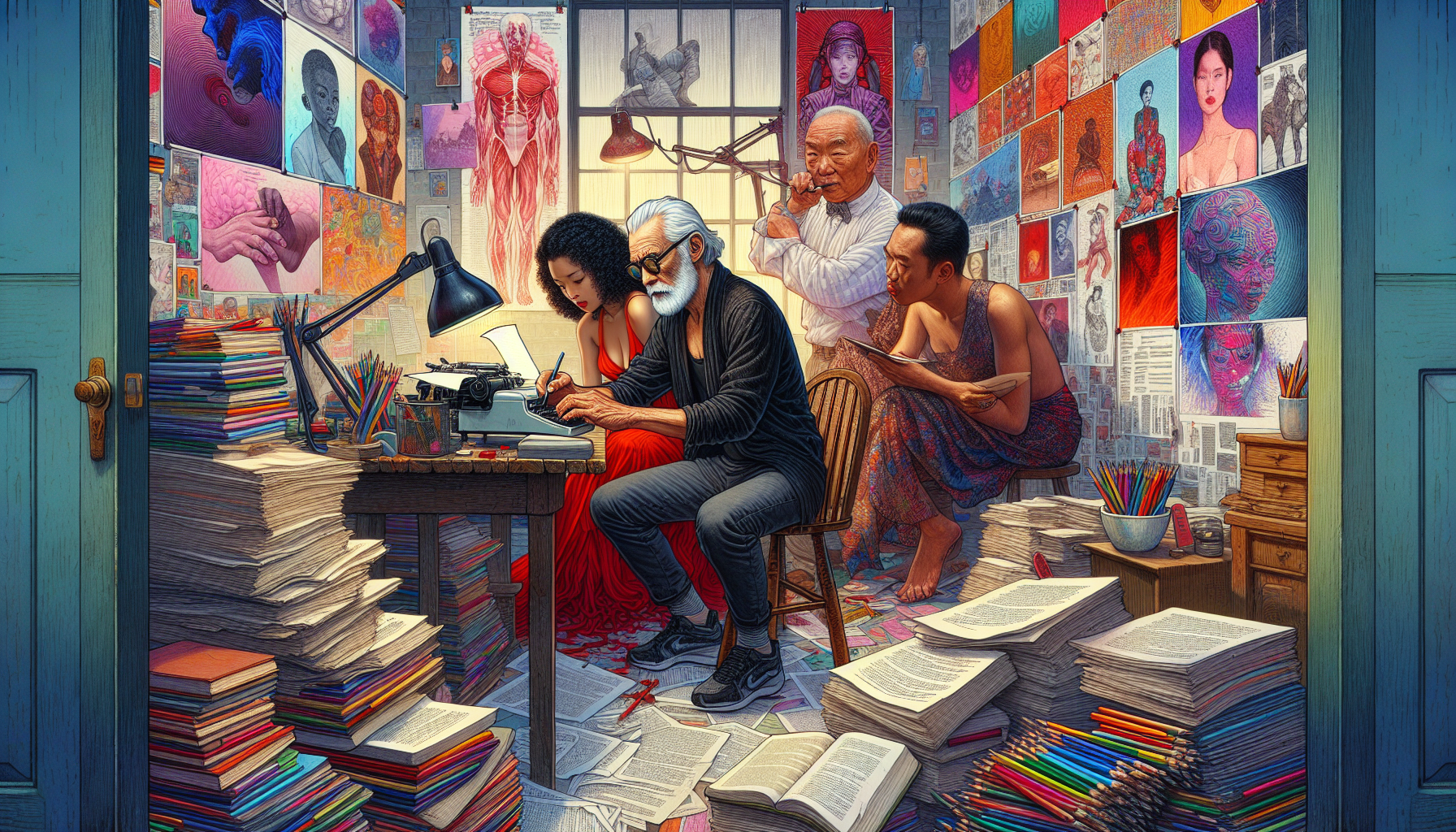
The Art of Heartstrings: Psychological Attraction in Screenwriting
Picture this: a misty-eyed audience, clutching their popcorn like it’s a safety raft, riding the waves of an on-screen romance. How does a screenwriter craft such a magnetic tale of love that pulls viewers by the heartstrings? Cue the role of psychological attraction. It’s the secret sauce, the wizardry behind the curtain, the neuronal fireworks that transform a simple story into an emotional epic.
Chapter One: Characters That Breathe
First things first, our leading lovers must be more than mere caricatures. They need the breath of life, quirks, flaws, and all. Creating multidimensional characters is like playing matchmaker with real people—only these you can control (cue evil laugh). A character’s appeal often lies in their complexity; think Mr. Darcy with his brooding pride or Elizabeth Bennet with her biting wit. Realistic characters with relatable issues, dreams, and fears make viewers invest emotionally, rooting for love to bloom against the odds.
Chapter Two: The Magnetic Pull of Connection
What’s love without a little—or a lot—of psychology? Theories such as the Triangular Theory of Love by psychologist Robert Sternberg can be screenwriter’s gold. This theory breaks down love into three components: intimacy, passion, and commitment. Integrate these elements into your storyline, and voila, you have a recipe that might just explain why viewers can’t help but ship Rose and Jack in Titanic.
Bring characters together through shared vulnerabilities or passionate debates; these moments build intimacy and sow the seeds of attraction. Paint scenes that pulsate with unspoken passion. And finally, test their commitment, through a siege of icebergs, villains, societal expectations, or even just the mundane struggles of everyday life.
Chapter Three: Conflict & Resolution – The Dance of Desire
No one likes a flat road; similarly, viewers crave the rollercoaster ride of relationship conflicts—an essential spice in the love story curry. It’s psychological tension that pulls viewers in, and the resolution that satisfies their palate. Scripted arguments can serve more than just drama; they reveal deeper sentiments, fears and ultimately a pathway to healing or growth.
For instance, consider the fervent dance between Elizabeth and Darcy in Pride and Prejudice. Their verbal sparring, the push and the pull, is laden with romantic tension, each conflict unveiling another layer of their complicated attraction. By resolving these clashes, they cater to the viewers’ yearning for emotional catharsis and happily ever after (or at least, a realistic approximation of it).
Chapter Four: The Subtleties of Show, Don’t Tell
If screenwriting had a golden rule, it would be “Show, don’t tell.” Let’s ditch the grandiose declarations of love that feel as real as a plastic rose. Instead, show your characters’ love through actions and circumstances. A lingering look, a hesitant touch, or a sacrifice speaks louder than the cheesiest of dialogue lines. These actions engage viewers’ ability to interpret and sympathize, drawing them deeper into the love labyrinth.
A masterful narrative of psychological attraction isn’t just about the grand gestures; the devil (or Cupid) truly is in the details. Random acts of kindness, the way characters react to each other’s jokes, or shared moments of vulnerability can ignite a fire that dialogue alone could never kindle.
Epilogue: The Consummate Closer
In the end, integrating psychological attraction into screenwriting isn’t just about creating a romance that entertains. It’s about sculpting an experience that resonates on a cerebral level. It is about conjuring a love so tangible, so palpable, that the audience could almost step into the screen and feel it for themselves. So, the next time you sit down to craft your screenplay, remember: psychological attraction isn’t just a tool; it’s the thread that weaves the heart of your narrative together.
Happy Writing! May your pens be as sharp as Cupid’s arrows and your characters’ love as bewilderingly complex as the human psyche itself!






